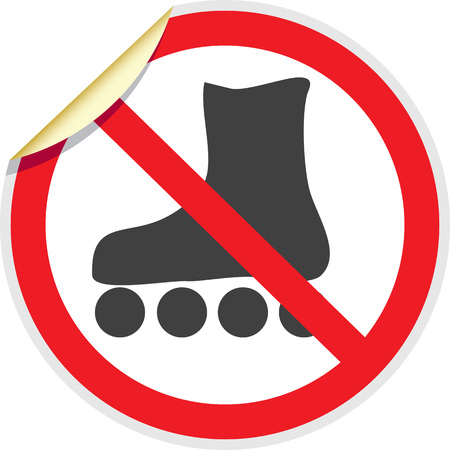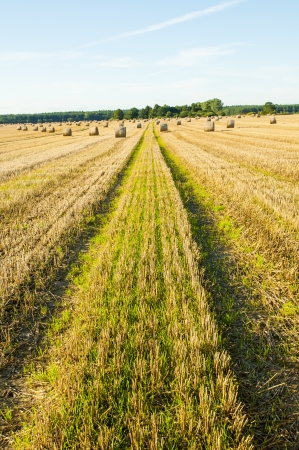Understanding Public Rights of Way in the UK
Navigating the British countryside is a cherished pastime, but it’s essential to understand the network of public rights of way that make rural exploration possible. In the UK, these routes are legally protected paths across private land, and they come in several forms: footpaths, bridleways, permissive paths, and access land. Footpaths are dedicated to pedestrians only, offering safe passage through fields, woods, and along rivers. Bridleways permit walkers, horse riders, and cyclists, while permissive paths are routes that landowners allow the public to use at their discretion—these can be closed at any time. Access land, defined under the Countryside and Rights of Way Act 2000, grants walkers the freedom to roam on designated open country and registered common land.
The Countryside Code is a cornerstone document for anyone exploring rural Britain. It sets out clear guidance: respect everyone, protect the environment, and enjoy the outdoors responsibly. Walkers are expected to keep to marked paths where required, close gates behind them, avoid disturbing wildlife or livestock, and leave no trace of their visit. Understanding these rights and responsibilities ensures harmonious relationships between walkers and farmers—and helps maintain access for future generations.
2. Identifying Livestock and Assessing Risks
Before setting out across UK farmland, it’s vital to recognise the types of livestock you may encounter and assess the associated risks. UK fields commonly host several species, each with distinct behaviours that walkers should be aware of to ensure their own safety as well as animal welfare.
Common Farm Animals Found in UK Fields
| Animal | Appearance | Typical Behaviour | Potential Hazards |
|---|---|---|---|
| Cattle (Cows & Bulls) | Large, sturdy; can be black, brown, white, or mottled | Generally docile but curious; cows with calves are protective; bulls can be unpredictable | Chasing, trampling—especially if startled or feeling threatened; extra caution with dogs present |
| Sheep | Medium-sized, woolly, mostly white or black-faced breeds | Nervous and skittish; typically avoid humans | Panic running could cause falls or injury—mainly a concern for the sheep themselves |
| Horses/Ponies | Tall, muscular build; variety of colours and markings | Curious and social but can be easily startled or territorial around feeding areas | Kicking or biting if approached suddenly; don’t feed or touch without permission |
| Pigs | Stocky, pink or black-skinned; often kept in pens but sometimes free-ranging | Sociable but strong-willed; may root around near paths | Biting if cornered or surprised; damage to boots or clothing possible |
Cues for Assessing Risk on Approach
- If livestock are blocking the path, observe their body language from a distance—raised heads or fixed stares could indicate agitation.
- Look for signs such as “Bull in Field” or “Calves Present”—these require heightened caution and sometimes choosing an alternative route.
Key Guidance Points:
- Avoid walking between mothers and their young.
- If you have a dog, keep it on a short lead but release it if cattle approach aggressively.
- Move calmly and steadily without sudden movements or loud noises.
Local Note:
Bulls are generally not permitted in fields crossed by public rights of way unless accompanied by cows or heifers—but always double-check signage before entering any field containing cattle.

3. Appropriate Behaviour Around Livestock
When crossing UK farmland, it is crucial to demonstrate appropriate behaviour around livestock to ensure both your own safety and the welfare of the animals. Staying calm is paramount; sudden movements or loud noises can startle cattle, sheep, or horses, potentially provoking unpredictable reactions. Always move at a steady pace, avoiding running or abrupt changes in direction, as this helps prevent drawing unnecessary attention from curious animals.
Maintaining a respectful distance from livestock is essential. As a rule of thumb, keep to the designated public footpaths and avoid approaching animals—particularly those with young calves or lambs, which may feel threatened by your presence. If you find yourself in a field with livestock blocking your route, give them a wide berth and look for alternative paths if possible. Never attempt to touch or feed any animals, as this can encourage unwanted behaviour and disrupt their routines.
It is also important to remain aware of your body language. Avoid making direct eye contact for extended periods, which some animals may perceive as a challenge. Instead, calmly walk past while keeping an eye on their general position. Should cattle begin to approach out of curiosity, do not panic; continue moving steadily towards the nearest exit or stile. If you are walking with dogs, always keep them on a short lead and be prepared to let go if you are threatened—your safety comes first.
In summary, showing consideration for livestock by staying calm, moving steadily, maintaining an appropriate distance, and avoiding provocative actions will help ensure a safe and enjoyable countryside walk across UK farmland.
4. Walking with Dogs: Responsibilities and Precautions
Exploring the British countryside with your dog is a rewarding experience, but it brings its own set of responsibilities—especially when navigating farmland. The UK has clear regulations and guidelines to ensure the safety of walkers, dogs, livestock, and farmers. Understanding these rules is crucial for anyone crossing fields where animals are present.
Key Rules for Dog Walkers in the UK
| Rule | Description |
|---|---|
| Keep Dogs Under Effective Control | You must be able to recall your dog immediately and prevent it from disturbing or chasing livestock. ‘Effective control’ means your dog stays close and responds to commands, especially around animals. |
| Use a Lead Near Livestock | The Countryside Code advises that dogs should always be on a short lead (no more than 2 metres) when near livestock, especially between 1 March and 31 July (nesting season), or at any time when animals are present. |
| Let Go of the Lead If Threatened | If cattle or other livestock charge you, release your dog from its lead. This allows both you and your dog to get to safety separately—dogs can usually outrun cattle. |
| Clean Up After Your Dog | Dog mess can spread disease to livestock. Always bag it and take it with you or dispose of it in designated bins. |
| Follow Local Signage and Farmer Instructions | Some footpaths may have temporary restrictions during lambing or calving seasons. Always observe signs and instructions from landowners. |
UK-Specific Regulations Worth Knowing
- Countryside and Rights of Way Act 2000: Gives walkers access to certain land but places obligations on dog owners regarding control near livestock.
- Dogs (Protection of Livestock) Act 1953: It is an offence if your dog worries livestock on agricultural land. “Worrying” includes attacking or chasing animals, or being at large among them.
- Public Spaces Protection Orders (PSPOs): Some areas may have local orders requiring dogs to be kept on leads at all times—check council notices.
Responding to Livestock Encounters with Your Dog
- If approaching a field with livestock, put your dog on a short lead before entering.
- Avoid walking directly through the middle of herds; skirt around them calmly and quietly.
- If animals become agitated, move away slowly and do not shout or run.
- If you feel unsafe, retreat the way you came or use an alternative route if available.
- Report any aggressive livestock behaviour to the local authority or landowner after leaving the area.
Summary Table: Dos and Don’ts for Dog Walkers on Farmland
| Do | Don’t |
|---|---|
| Keep your dog under close control at all times. | Let your dog off-lead near livestock unless threatened by charging animals. |
| Use a short lead through fields with sheep or cattle. | Ignore signage about restricted access or local PSPOs. |
| Tidy up after your dog to protect animal health. | Allow your dog to chase wildlife or farm animals under any circumstances. |
Navigating UK farmland with a dog demands awareness, preparation, and respect for rural life. By following these key rules and recognising the legal framework in place, you help ensure that everyone—walkers, farmers, livestock, and pets—remains safe during countryside adventures.
5. Staying Safe and Respecting Farmers’ Property
When walking across UK farmland, it’s vital to remember that you’re a guest on someone else’s working land. Respect for farmers and their property is not only courteous but also essential for your own safety and the preservation of rural life.
Best Practices for Closing Gates
Always leave gates as you find them—if a gate is open, leave it open; if closed, close it securely behind you. This helps farmers manage livestock movement and prevents animals from straying onto roads or into the wrong fields. Use latches gently to avoid damaging them, and never climb over gates or fences unless absolutely necessary, as this can weaken them.
Following Signs and Staying on Paths
Look out for waymarkers, footpath signs, and permissive path indicators. Following these ensures you stay on the designated route and avoid trespassing onto private areas. If a diversion is signposted due to livestock or farming activity, always use the alternative route provided.
Avoiding Crop Damage
Stick strictly to marked footpaths, especially through fields of crops. Walking even a short distance off-path can damage young plants or create unwanted tracks that encourage others to stray as well. If paths are unclear due to growth, follow the line of the right of way as best as possible—hedgerows or fencing often provide clues to its direction.
What to Do in Case of an Incident or Emergency
If you encounter aggressive livestock or feel threatened, retreat calmly and retrace your steps if possible. In case of injury or emergency, call 999 for immediate assistance, giving clear details about your location—using landmarks, field numbers (if visible), or apps like What3words can help emergency services find you quickly. Report any damage or incidents to the landowner if contact information is available at the field entrance.
Final Thoughts on Rural Etiquette
Your actions have a direct impact on farm operations and community relationships. By closing gates properly, following signs, avoiding crop damage, and knowing how to respond in emergencies, you contribute positively to the countryside experience for everyone.
6. Useful Resources and Reporting Concerns
While exploring the UK’s farmland, it’s reassuring to know there are several trusted resources and organisations ready to support walkers with information, guidance, or when issues arise. Whether you need clarification on your rights, want advice on best practice, or need to report a concern about livestock or access, these points of contact are invaluable for a safer countryside experience.
Key Organisations for Walkers
- Ramblers Association: The Ramblers offer extensive guidance on walking routes, the Countryside Code, and how to deal with access problems. Their website also provides tools for reporting obstructions or illegal blocking of public rights of way.
- National Farmers’ Union (NFU): For queries related to farming practices or if you encounter livestock-related hazards, the NFU offers advice to both landowners and the public.
- Natural England: This government body oversees access land and public rights of way in England. Their site is a reliable source for statutory information and updates regarding open access areas.
Reporting Issues Encountered on Farmland
- Your Local Council’s Rights of Way Officer: Most councils have dedicated officers to handle reports of blocked paths, damaged stiles, or unsafe gates. Check your council’s website for contact details.
- Police (Non-Emergency): If you witness dangerous behaviour involving livestock or anti-social activity that could endanger walkers, contact the police via 101 (the non-emergency number).
Useful Websites
- GOV.UK: Public rights of way and open access land
- Ramblers Pathwatch: Report a Path Problem
- The Countryside Code
In Summary
If you are ever unsure about crossing farmland or encounter something concerning—such as aggressive livestock, misleading signage, or blocked paths—don’t hesitate to seek advice from the above resources. Staying informed not only helps protect your own safety but also contributes to maintaining positive relations between walkers and those who work the land.


